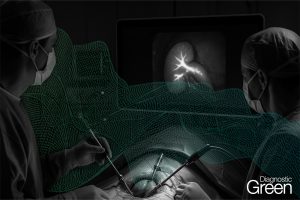Background: The incidence of esophageal cancer continues to increase. Despite increasing experience in esophageal surgery and perioperative management, anastomotic leakage remains a frequent and severe complication.
Objective: The aim of this article is to demonstrate the current role of fluorescence angiography (FA) with indocyanine green (ICG) in the assessment of esophageal anastomoses. The main focus is on the evaluation of the perfusion situation. Material and methods: A systematic search was carried out in PubMed and Medline on FA and ICG, especially with respect to current subjective and objective interpretation approaches of FA against the background of own research.
Results: The rate of anastomotic leakage remains high despite modern surgical procedures. Assessment of neoesophageal perfusion with FA can significantly reduce the rate of anastomotic leakage. At present, FA is mostly subjectively applied in small case studies. The study situation is heterogeneous. Randomized studies do not so far exist.
Conclusion: The use of FA with ICG is suitable for evaluation of perfusion of the gastric tube. The implementation is simple and can be standardized. Prospective, randomized trials and objective quantification are needed in the future in order to clarify the potential of the technique.




